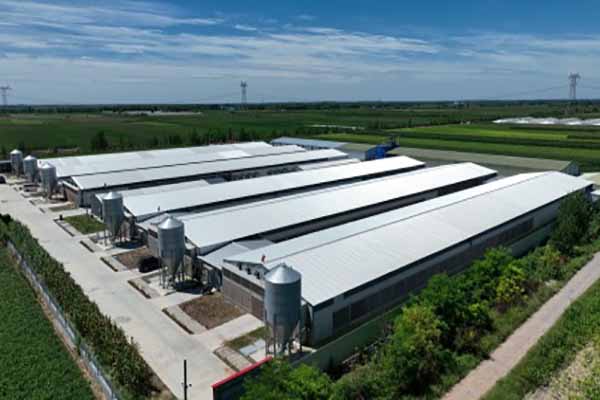90000 Egg-Laying Chicken Cages: A Comprehensive Guide to High-Volume Poultry Farming Equipment
Time : 2025-07-04
The poultry industry is a vital sector of the global economy, and efficient egg-laying systems are essential for maximizing production and profitability. In this article, we delve into the world of 90000 egg-laying chicken cages, exploring their design, benefits, and how they contribute to the success of large-scale poultry farming operations.
Introduction to 90000 Egg-Laying Chicken Cages
Egg-laying chicken cages are specialized structures designed to house hens for the purpose of egg production. These cages are engineered to ensure the health and well-being of the chickens while also providing an efficient environment for egg collection. The 90000 egg-laying chicken cage refers to a system capable of housing 90,000 hens, making it suitable for large-scale commercial poultry farming.
Design Considerations for 90000 Egg-Laying Chicken Cages
1. Structural Integrity: The construction of these cages must be robust and durable to withstand the demands of intensive farming. High-quality steel or reinforced plastic materials are commonly used for this purpose.
2. Ventilation: Proper ventilation is crucial for maintaining optimal conditions inside the cages. Adequate airflow helps regulate temperature and humidity, reducing the risk of respiratory diseases in the chickens.
3. Space Allocation: The size of each cage should be designed to provide enough space for the chickens to move around comfortably. This ensures good health and prevents feather pecking, which can lead to injury and decreased productivity.
4. Egg Collection Mechanism: Automated egg collection systems are essential in large-scale operations. These systems should be designed to minimize the risk of eggs being broken or contaminated.
5. Sanitation: Easy cleaning and disinfection are vital to prevent the spread of diseases. The design of the cages should facilitate quick and thorough cleaning.
Benefits of 90000 Egg-Laying Chicken Cages
1. Increased Production: These cages can significantly increase the number of eggs produced per unit area, making them ideal for large-scale farms aiming to maximize output.
2. Reduced Labor Costs: Automated systems and efficient design can reduce the need for manual labor, leading to lower operational costs.
3. Improved Egg Quality: The controlled environment within the cages promotes better egg quality and reduces the risk of contamination.
4. Health and Welfare of Chickens: The design of the cages ensures that chickens have access to food, water, and nesting areas, promoting their overall health and welfare.
Implementation and Maintenance
Implementing a 90000 egg-laying chicken cage system requires careful planning and execution. Here are some key considerations:
1. Site Selection: The location of the farm should be chosen based on factors such as climate, proximity to markets, and availability of water and electricity.
2. Installation: Professional installation by experienced technicians is crucial to ensure that the system is set up correctly and functions efficiently.
3. Regular Maintenance: Regular maintenance is essential to keep the cages in good condition and to prevent breakdowns. This includes checking for wear and tear, cleaning, and disinfection.
4. Training: Staff should be adequately trained on how to operate and maintain the equipment to ensure its optimal performance.
Conclusion
The 90000 egg-laying chicken cage system is a testament to the evolution of modern poultry farming. It represents a significant investment in technology and efficiency, offering numerous benefits to large-scale poultry producers. By focusing on design, installation, and maintenance, farmers can ensure that their operations are both productive and sustainable.












